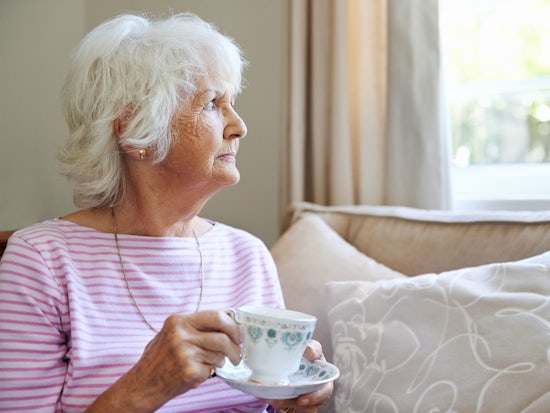Report reveals brutal reality that ‘too many Australians are still waiting’
News of an increase in the number of older Australians supported by home care packages has been welcomed as bittersweet by many, following corresponding statistics which reveal that more are waiting for support, or receiving no support, than ever before.

You may wonder about what has changed and how these changes affect you (Source: Shutterstock)
The figures released this month, as part of the Home Care Packages Program Data Report 3rd Quarter 2017-18, show a five percent increase in the take up of home care packages over the last three month period (ending 31 March), as well as the increased total of more than 108,000 people who are still waiting for appropriate levels of care, and around 30,000 who are receiving no support at all.
Among those stepping forward to speak out on the new data is national advocacy group Council on the Ageing (COTA), with Chief Executive Ian Yates welcoming the increase in home care packages available to Australians, but noting that there are still too many “missing out” on the support they need.
“While there will be 24,000 more packages released in this financial year after the Federal Budget increase, funding for even more packages is still urgently required for those Australians who are desperately waiting for home care,” he explains.
“We need the Federal Government to commit to increasing funding for home care packages to ensure the waiting time for new packages is substantially reduced – waiting a whole year for a high-level package is unacceptable in a modern Australia.
“There’s been an enormous shift in Australians’ preferences for home care packages, as opposed to residential care.
“Around 40 percent of aged care places are projected to be home care packages by 2021 – up from just one percent 25 years ago.
“COTA has long said that more home care packages are needed and [these] figures back that up.”
Fellow national peak body – Aged and Community Services Australia (ACSA) – has also banded with a coalition of leading not-for-profit aged care providers to speak out about the “worrying and unsustainable trend” in the demand and provision of home care packages for older Australians.
ACSA CEO Pat Sparrow spoke on behalf of the providers about the statistics.
“These figures show a trend towards more people waiting for home care, more people being assigned packages that don’t meet their needs and more people joining the queue for services,” Ms Sparrow explains.
She notes that the data for the three month period ending on 31 March 2018 shows the queue of those waiting to receive a package, or an appropriate package for their needs, rose to 108,456 people compared to 104,602 for the December quarter.
“Nationally, there are now 54,821 people in the queue still without any package assigned or settling for a lower package than they require – a more than 14 percent jump since the last data report.
“This is beyond frustrating for those older Australians waiting for care, not to mention their families, and without further investment recognising the problem as one of sustainability in funding going forward the problem will only get worse.”
A number of the ACSA coalition aged care groups also shared their concerns on the issue, with Presbyterian Care Australia spokesperson Paul Sadler saying limited home care choice and provision will eventually add pressure on other aged care services.
“It is important for people to get the care they need at home for their quality of life and also to avoid or defer a move to costlier permanent residential aged care,” he says.
“An inability to access a home care package when it is needed may severely limit the support choices of an older person.”
In light of the new statistics ACSA and their supporters, like Presbyterian Care, are calling on Government to commit to:
- An immediate release of more packages particularly more level 3 and 4
- Additional support for assessment processes and services to ensure the prioritisation process is as effective and efficient as it can be
With COTA making their own calls for Government to:
- Fund additional home care packages in Mid-Year Economic and Fiscal Outlook (MYEFO) in November and in next year’s budget
- Ensure wait times are reduced to no more than three months after assessment
- Publish the estimated quarterly release of packages in advance and by package level
- Release data within two months of the end of each quarter
Mr Yates says both Minister Wyatt and the Treasurer have agreed since the Budget that even more home care packages are needed, but says we need to see the Federal Government commit to concrete targets and to put a timetable in place to make sure that happens.
“Australians are crying out for home care support and while that’s fast becoming a reality for many people, the reality is that too many Australians are still waiting,” he says.
Federal Minister for Aged Care Ken Wyatt shared his assurances with people prior to releasing the latest data that “as many people as possible who are approved for home services are receiving support”.
“We now know that a record number are receiving home care packages and three-quarters of those listed for home care are receiving Federal Government support to help them remain living in their own homes,” he says.
“Thanks to the Government’s $1.6 billion Budget investment in 14,000 additional high-level home care packages, the total number of packages will rise from approximately 87,500 now to 151,000 by 2022.
“This will include 34,000 more high-level packages. The first phase of this rollout began in July 2018.”
Mr Yates also called on the Federal Opposition to commit to the three month waiting time target if elected in the new year.
The full Home Care Packages Program Data Report 3rd Quarter 2017-18 is available to view online.






















